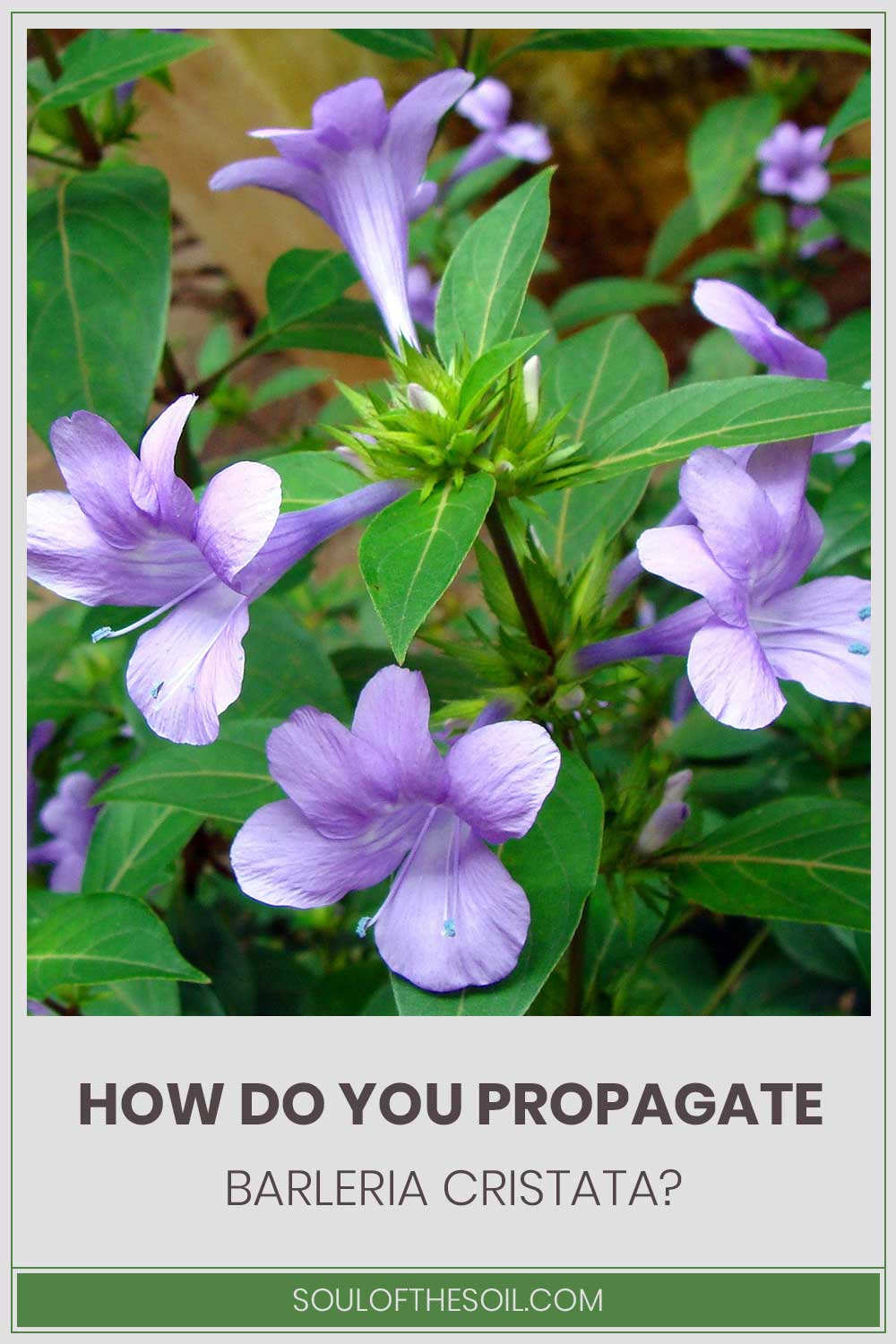How Do You Propagate Barleria Cristata?
We may earn commissions for purchases made through links on our site. Learn more on our about us page.
It’s possible to get 1.5 meters of height out of a Barleria Cristata shrub. Its original home is in India and the Southeast Asian region. It is a member of the Acanthaceae family.
Among its many names, you may know this flower as the Crested Philippine Violet, the Striped Philippine Violet, or the Bluebell Barleria. The leaves are simple, glossy, ovate-lanceolate, opposite, and either dark green or light green on their top surface.
Flowers of the species Barleria Cristata are solitary and arranged in a funnel shape; they can be a vivid shade of violet, pink, or white. The capsules, or fruit, are long and ellipsoid. When they reach maturity, they take on a shiny, glabrous appearance.
The thorns of a plant appear close to the axils of its leaves. Since it flowers in December, locals in Tamil Nadu refer to it as December Poo or December Flower.
But how do you propagate Barleria Cristata? In this article, we will tell you everything you need to know.

What Do You Need to Have Before You Start?
You do not need any special tools for this, as propagating Barleria Cristata is a very simple task. However, you do need the right location, soil, and landscape.
It can flower and grow with relatively little exposure to sunlight. Barleria cristata is adaptable enough to be planted in either full sun or partial shade locations. This plant does well in dry conditions and prefers soils with good drainage.
What Tools Do You Need?
When you’re first getting started with plant propagation, it can be difficult to know what tools, equipment, and supplies you’ll need.
The good news is that plant propagation doesn’t require a lot of fancy gadgets. However, there are some items that you will require.
- Micro Snips
- Multi Snip Tool
- Bonsai Scissors
- Tool Sharpener
You shouldn’t feel obligated to buy everything on the list. However, we will provide you with a number of alternatives from which to select the one that best meets your needs.
At what Time of the Year Do You Need to Do it?
The plant is easily propagated from 8-10 cm long cuttings taken in the spring and summer. The cuttings are then covered with polyethylene and planted in a sloppy medium.
About a week later, the roots typically start to show up. Cutting-grown Barleria flowers the same year as the original plant.
Which Soil is the Best for it?
Most plants do best in locations that receive full sun to partial shade and have well-drained soils, dry to medium-wet. Though shrubs may endure dry conditions, their growth is most robust in soil with an even moisture distribution.
Things You Shouldn’t Do
Plants can be propagated by a number of different means, such as by planting seeds or dividing the rootball.
Propagation is a must to increase your plant stock without spending any money. But, on the other hand, there are some mistakes to avoid if you want your seedlings, cuttings, or divisions to flourish and thrive.
The Wrong Compost
Finding a single sort of compost that can be utilized for all forms of propagation is difficult. However, compost can be modified to meet individual requirements. For example, multi-purpose compost with perlite mixed will suit most softwood cuttings.
However, if you’re using semi-ripe or hardwood cuttings, which take longer to root and benefit from a thicker, more stable mix, you may wish to add coarse grit instead.
Dehydrated Plants
As plants constantly lose water through their leaves, cuttings (which lack roots to suck in water) are especially vulnerable to dehydration. Make sure to bring a plastic sandwich bag with a small amount of water with you whenever you take cuttings.
Cutting the leaves of larger-leaved plants in half and removing the bottom pair from each cutting can also help reduce water loss.
The Wrong Propagation Method
Not every plant can be successfully propagated using the same method. Some plants are best propagated by cuttings rather than seeds, despite popular belief to the contrary.
For example, hellebores should not have their roots separated; instead, they should be started from seed. However, hydrangeas are difficult to divide because of their huge size and woody nature, although cuttings can be taken easily from their softer interior wood.
Never assume you know the best method for propagating a plant; instead, study up on the subject.
Final Thoughts on Propagating Barleria Cristata
Propagating your Barleria Cristata can be simple and easy. You do not need any special tools to do so, and the requirements for a Barleria Cristata are pretty straightforward.
As long as you plant them in the right soil and give them the amount of sun/shade they require, you should have no problem with the plant.
However, people still make some common mistakes when propagating their Barleria Cristata, which can be easily avoided. Therefore, you should always take great care and research your plants for the best results.



Leave a Reply
You must be logged in to post a comment.